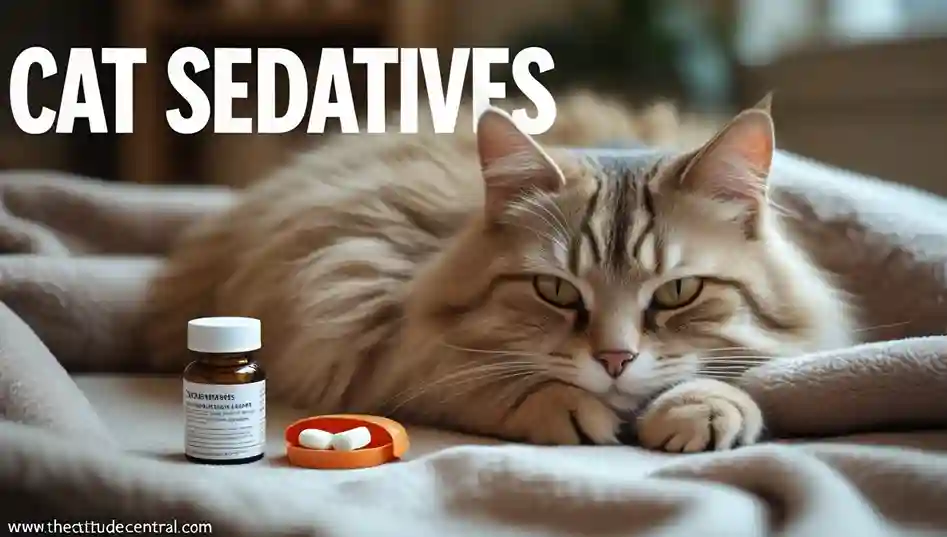Amantadine for cats is gaining attention among pet owners and veterinarians as a versatile medication for managing specific health conditions in felines. Originally developed for humans, Amantadine has found a place in veterinary medicine, particularly for treating chronic pain and certain neurological disorders in cats.
This detailed guide explores what Amantadine is, how it works, its benefits, potential side effects, and practical tips for cat owners considering this treatment. We’ll also address common questions sourced from Google Trends and highlight relevant products available on Amazon to support your cat’s health.
What is Amantadine for Cats?
Amantadine is a medication primarily known for its antiviral properties in human medicine, but in veterinary care, it’s used for its pain-relieving and neuroprotective effects. For cats, Amantadine is often prescribed to manage chronic pain, particularly from conditions like osteoarthritis or neuropathic pain, and to support treatment for certain neurological disorders. Its ability to modulate pain pathways makes it a valuable tool in feline healthcare, especially when used in combination with other therapies.
Veterinarians may recommend Amantadine for cats with conditions that cause persistent discomfort, such as arthritis or nerve-related pain. Unlike traditional painkillers, Amantadine works by targeting the nervous system, specifically by acting as an NMDA receptor antagonist, which helps reduce the perception of pain without causing sedation in most cases.
How Amantadine Works in Felines
Amantadine for cats functions by blocking NMDA receptors in the brain and spinal cord, which are involved in transmitting pain signals. By inhibiting these receptors, Amantadine reduces the intensity of pain, particularly neuropathic pain, which is often resistant to standard analgesics. This mechanism also makes it useful for cats with neurological conditions, as it can help stabilize nerve activity.
Additionally, Amantadine has mild dopamine-enhancing effects, which may contribute to its efficacy in managing certain movement or behavioral disorders in cats. Its multifaceted action makes it a unique addition to a veterinarian’s toolkit, especially for complex cases where pain or neurological symptoms are difficult to control.
Benefits of Amantadine for Cats
Using Amantadine for cats offers several benefits, particularly for those suffering from chronic conditions. Here are some key advantages:
- Effective Pain Management: Amantadine is particularly effective for neuropathic pain, which is often challenging to treat with conventional painkillers like NSAIDs. It can be a game-changer for cats with conditions like diabetic neuropathy or post-surgical nerve pain.
- Complementary Therapy: Amantadine is often used alongside other medications, such as gabapentin or opioids, to enhance pain relief without increasing sedation or side effects.
- Neuroprotective Properties: For cats with neurological disorders, Amantadine may help protect nerve cells and improve symptoms associated with conditions like feline hyperesthesia syndrome.
- Improved Quality of Life: By reducing pain and discomfort, Amantadine for cats can help them stay active, engage in normal behaviors, and enjoy a better quality of life.
Conditions Treated with Amantadine
Veterinarians may prescribe Amantadine for cats with the following conditions:
- Osteoarthritis: Chronic joint pain from arthritis can significantly impact a cat’s mobility. Amantadine helps reduce pain, allowing cats to move more comfortably.
- Neuropathic Pain: Conditions like nerve damage from diabetes or trauma can cause persistent pain, which Amantadine can help manage.
- Feline Hyperesthesia Syndrome: This neurological condition causes hypersensitivity and discomfort, and Amantadine may help stabilize nerve activity.
- Post-Surgical Pain: After invasive procedures, Amantadine can assist in controlling nerve-related pain during recovery.
For cat owners looking to support their pet’s joint health, products like Cosequin for Cats (available on Amazon) can complement Amantadine’s effects by promoting cartilage health and reducing inflammation. Always consult your veterinarian before combining supplements with prescription medications.
Dosage and Administration of Amantadine for Cats
The dosage of Amantadine for cats varies based on the cat’s weight, condition, and overall health. Typically, veterinarians prescribe Amantadine at a dose of 3-5 mg/kg of body weight, administered once or twice daily. It’s usually given orally in capsule or liquid form, though compounding pharmacies can create flavored versions to make administration easier for cats.
Tips for Administering Amantadine
- Use a Pill Popper: Cats can be notoriously difficult to medicate. A Pet Piller (available on Amazon) can help you safely and effectively give your cat Amantadine capsules.
- Mix with Food: If your cat refuses pills, ask your veterinarian about a compounded liquid form of Amantadine that can be mixed with wet food.
- Monitor Timing: Administer Amantadine at consistent times each day to maintain steady levels in your cat’s system.
Always follow your veterinarian’s instructions precisely, as incorrect dosing can lead to side effects or reduced efficacy. Never adjust the dose without consulting your vet.
Potential Side Effects of Amantadine for Cats
While Amantadine for cats is generally well-tolerated, it can cause side effects in some cases. Common side effects include:
- Gastrointestinal Upset: Some cats may experience vomiting, diarrhea, or loss of appetite.
- Agitation or Restlessness: Amantadine’s dopamine-enhancing effects can occasionally cause behavioral changes, such as increased activity or irritability.
- Lethargy: Though less common, some cats may appear tired or less responsive.
- Allergic Reactions: Rarely, cats may show signs of an allergic reaction, such as swelling or difficulty breathing. Seek immediate veterinary care if this occurs.
If your cat experiences side effects, contact your veterinarian promptly. They may adjust the dose or recommend an alternative treatment. To support your cat’s digestive health during treatment, consider a Probiotic Supplement for Cats (available on Amazon), which can help maintain gut balance.
Safety Precautions
- Avoid in Cats with Kidney Issues: Amantadine is excreted through the kidneys, so cats with renal disease may require adjusted doses or alternative treatments.
- Monitor for Drug Interactions: Amantadine can interact with other medications, such as antihistamines or certain antidepressants. Inform your veterinarian of all medications and supplements your cat is taking.
- Not for Pregnant Cats: The safety of Amantadine in pregnant cats has not been established, so discuss risks with your vet.
How to Monitor Your Cat’s Response to Amantadine
When starting Amantadine for cats, it’s essential to observe your pet closely to ensure the medication is working effectively and not causing adverse effects. Here’s how to monitor your cat:
- Track Pain Levels: Note changes in your cat’s mobility, appetite, or behavior. For example, a cat with arthritis may start jumping onto furniture more easily.
- Watch for Side Effects: Keep a log of any unusual symptoms, such as vomiting or agitation, and report them to your vet.
- Regular Vet Checkups: Schedule follow-up appointments to assess your cat’s response to Amantadine and adjust the treatment plan if needed.
Using a Pet Health Journal (available on Amazon) can help you track your cat’s symptoms, medication schedule, and vet visits, ensuring you stay organized and proactive.
Amantadine for Cats: Cost and Availability
The cost of Amantadine for cats varies depending on the dosage, form (capsule or liquid), and whether it’s compounded. On average, a month’s supply can range from $20 to $50, though prices may differ based on your location and pharmacy. Compounded versions, which are often flavored for cats, may be slightly more expensive.
Amantadine is a prescription medication, so you’ll need a veterinarian’s approval to obtain it. Some online pharmacies, such as Chewy or PetMeds, offer Amantadine, but always ensure you’re purchasing from a reputable source. For convenience, you can also explore Pet Medication Organizers on Amazon to keep your cat’s prescriptions sorted and accessible.
Integrating Amantadine into a Holistic Care Plan
Amantadine for cats is most effective when used as part of a comprehensive care plan. Here are some ways to support your cat’s health while using Amantadine:
- Diet and Nutrition: Feed your cat a high-quality diet to support overall health. Products like Hill’s Science Diet Senior Cat Food (available on Amazon) can provide balanced nutrition for older cats with chronic conditions.
- Physical Therapy: For cats with arthritis, gentle exercises or physical therapy can complement Amantadine’s pain-relieving effects.
- Environmental Enrichment: Provide comfortable bedding, low-entry litter boxes, and ramps to make your home more accessible for a cat with mobility issues. A Pet Ramp (available on Amazon) can be a great addition for cats with joint pain.
FAQs About Amantadine for Cats
Based on Google Trends and common search queries, here are answers to frequently asked questions about Amantadine for cats:
What is Amantadine used for in cats?
Amantadine for cats is primarily used to manage chronic pain, such as that caused by osteoarthritis, neuropathic pain, or post-surgical discomfort. It may also be prescribed for neurological conditions like feline hyperesthesia syndrome.
Is Amantadine safe for cats?
When used under veterinary supervision, Amantadine is generally safe for cats. However, it may cause side effects like gastrointestinal upset or agitation, and it’s not suitable for cats with certain conditions, such as kidney disease.
How long does it take for Amantadine to work in cats?
The effects of Amantadine for cats may be noticeable within a few days to a week, depending on the condition being treated. Pain relief may take longer for chronic conditions, so consistent administration is key.
Can Amantadine be used with other medications?
Yes, Amantadine is often used in combination with other medications like gabapentin or NSAIDs. Always inform your veterinarian about all medications your cat is taking to avoid interactions.
Where can I buy Amantadine for my cat?
Amantadine is a prescription medication available through veterinary clinics or online pharmacies like Chewy or PetMeds. Ensure you have a valid prescription from your veterinarian.
How can I make giving Amantadine to my cat easier?
Use a Pet Piller or ask for a compounded liquid version of Amantadine that can be mixed with food. Treats like Greenies Pill Pockets can also make medication time more appealing for your cat.
Conclusion
Amantadine for cats is a powerful tool for managing chronic pain and neurological conditions, offering hope for cats suffering from arthritis, neuropathic pain, or feline hyperesthesia syndrome. By understanding its uses, benefits, and potential side effects, cat owners can make informed decisions in collaboration with their veterinarians. Pairing Amantadine with supportive products like those available on Amazon and a holistic care plan can further enhance your cat’s quality of life. Always consult your veterinarian before starting any new medication, and monitor your cat closely to ensure the best outcomes.
Additional resources:
Consider exploring The Conscious Cat, a trusted blog for feline health insights, or check out Cats.com for veterinarian-written guides on cat care.



